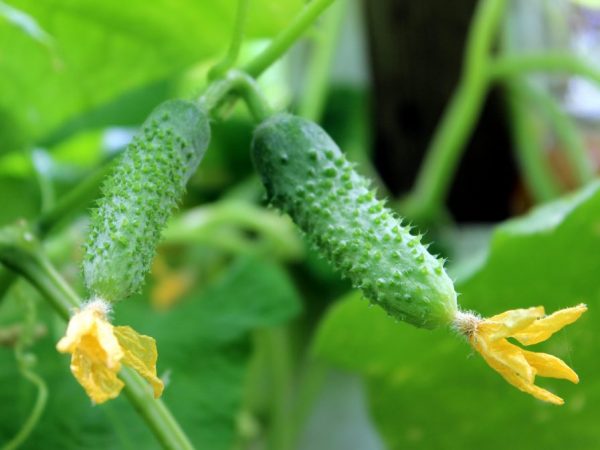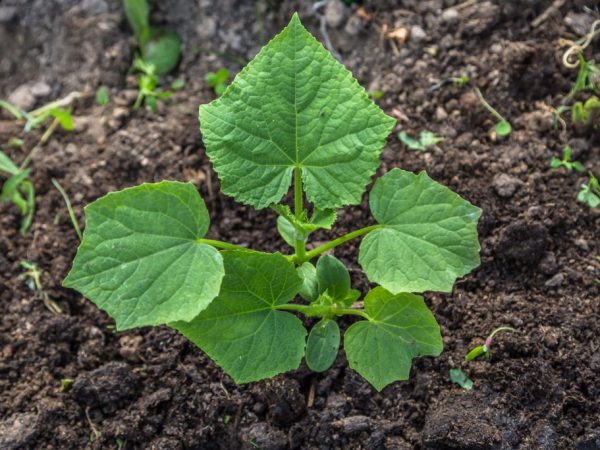Characteristics of varieties of cucumbers Babushkina
Among cucumbers, there are many types and hybrid categories. The varieties of cucumbers Babushkina, Gostinets and Vnuchka are among the most famous.

Characteristics of varieties of cucumbers Babushkina
These varieties are similar in characteristics, but there are some differences.
Characteristics of varieties
In addition to Grandmother's gift and Grandmother's granddaughter, there is another variety of grandmother's cucumbers - Secret. All Cucumbers belong to the F1 hybrid category.
Description of the bush
According to the description, the bushes of the Grandmother's varieties usually grow up to 1 or 1.5 m. Scourges have an average branching.
The varieties are known for a long fruiting stage, rarely get sick. The hotel bears fruit in 52 days, and the Granddaughter - after 32. The Hotel has a mixed type of flowering, while the Granddaughter is dominated by the female.
Description of the fetus
The length of the fruits in both varieties is the same - it reaches 10 cm, and the weight is very different: for the Granddaughter it is 130 g, for the Gostinets - 65 g.
Grandma's present has a peel covered with light stripes, large tubercles and small thorns. Grandma's granddaughter has small tubercles and no thorns. Both cucumbers have good taste characteristics. The fruits can be used in conservation.
Cucumbers are very healthy. The fiber content in them helps to cleanse the stomach of harmful substances. The presence of vitamins and minerals helps the body to better perform the functions of blood purification, increases brain activity.
Care
There are a number of rules for caring for the Gostinets and Vnuchka varieties.
Planting care
Planting begins in the spring. The seeds are soaked in a solution of water and minerals, sown after drying. The greenhouse is the best place to grow Grandma's cucumbers.
Cucumbers are watered immediately after planting, being careful: excess moisture can cause root rot.
Care after landing

Good plant care contributes to a tasty harvest
After planting, the site is cleaned: dirt, the remains of other plants are removed, weeds are monitored. If the length of the bush has reached 1 m, it is tied to a trellis for stability. Cucumbers are watered every day using mineral fertilizers (1 tablespoon fertilizer per 1 liter of water).
Pests and diseases
F1 hybrids rarely get sick, but they are not protected from pests.
Pests
Pests appear even if the vegetables are properly looked after. Fortunately, there are many ways to get rid of harmful insects.
- Whitefly is a small white fly that feeds on plant sap, which causes leaves to rot. A solution of garlic and water (150 g of garlic per 1 liter of water) helps against whitefly. The whole bush is sprayed with the solution.
- Aphids are green insects. This pest drinks juice from the leaves. As a result, aphids rob the bushes of healthy leaves and cause rotting. In the fight against the pest, a solution of wood ash, soap and water is used (2.5 liters of water per 50 g of wood ash and 20 g of soap).
- Spider mites are insects 0.3-0.6 mm in size. The spider mite leaves a cobweb on the leaves and drinks the sap of the plant. To combat the pest, prepare a soap solution (1 tbsp. L. Soap per 1 liter of water).
The most effective and expensive option for pest control is the use of branded insecticides.
Diseases
F1 hybrids recover quickly but cannot cope on their own. At the first symptoms of the disease, treatment should be started.
- Powdery mildew. White-yellow spots appear on the leaves of the bush, they wither, fruiting stops. For treatment, a solution of fungicide and water is used (10 g of fungicides per 5 liters of water). If the disease has gone too far, the plant is destroyed.
- Cladosporium. Leaves and fruits are covered with brown spots. To cure the bush, they stop watering it for 4 days and treat it with foundation (10 g of foundation for 0.5 liters of water).
- White rot. Sticky white growths appear all over the bush. For treatment, a solution of urea, water, zinc sulfate and copper sulfate is used (10 g of copper sulfate, urea, zinc sulfate per 2 liters of water).
- Downy mildew. Yellow spots appear on the leaves. The bush dries up, the leaves wither. For treatment, stop watering the bush for 5 days and treat it with a solution of polycarbacin (10 g of polycarbacin per 4 l of water).
Diseased plants infect healthy ones. The neglected bushes are destroyed.
Conclusion
The varieties of cucumbers Babushkina's granddaughter and Babushkin's gift will definitely appeal to gardeners who will appreciate the ease of cultivation and the taste of the varieties.


